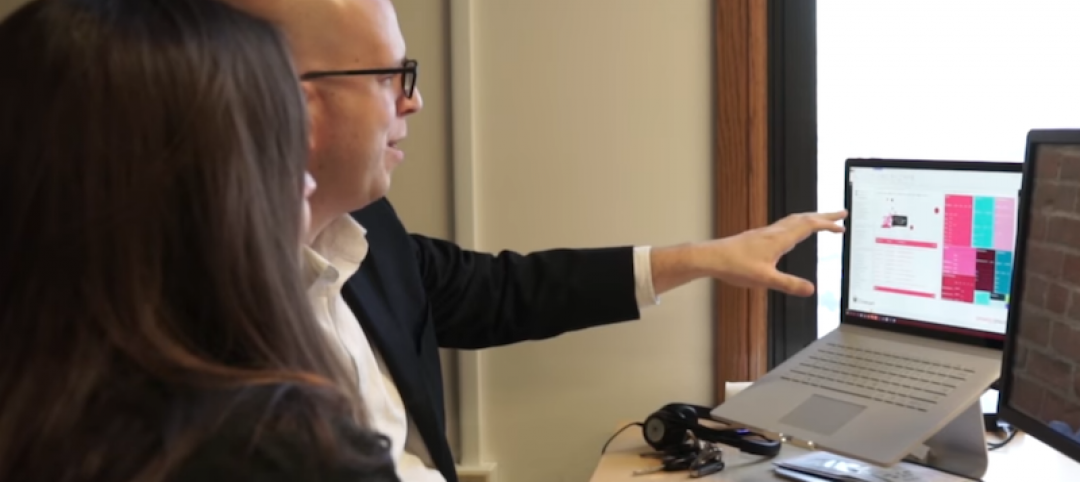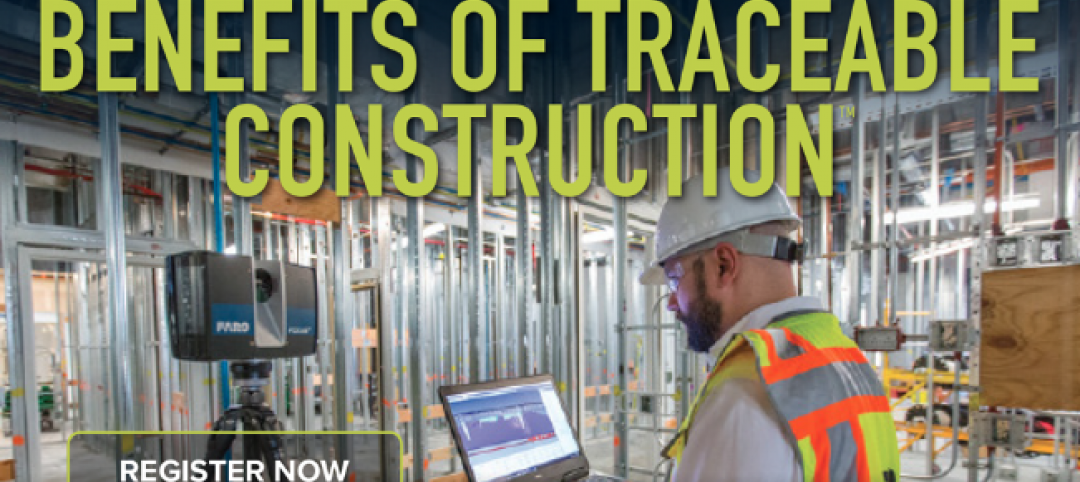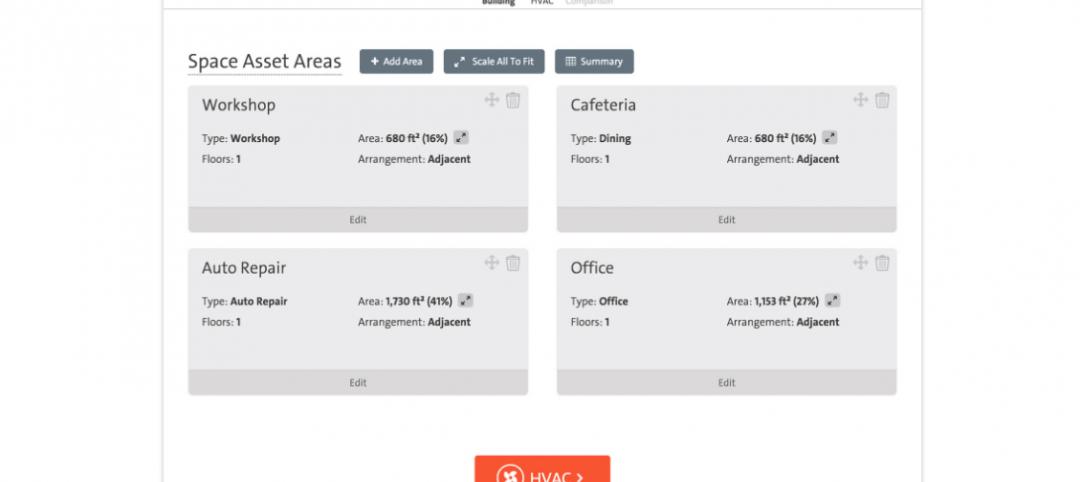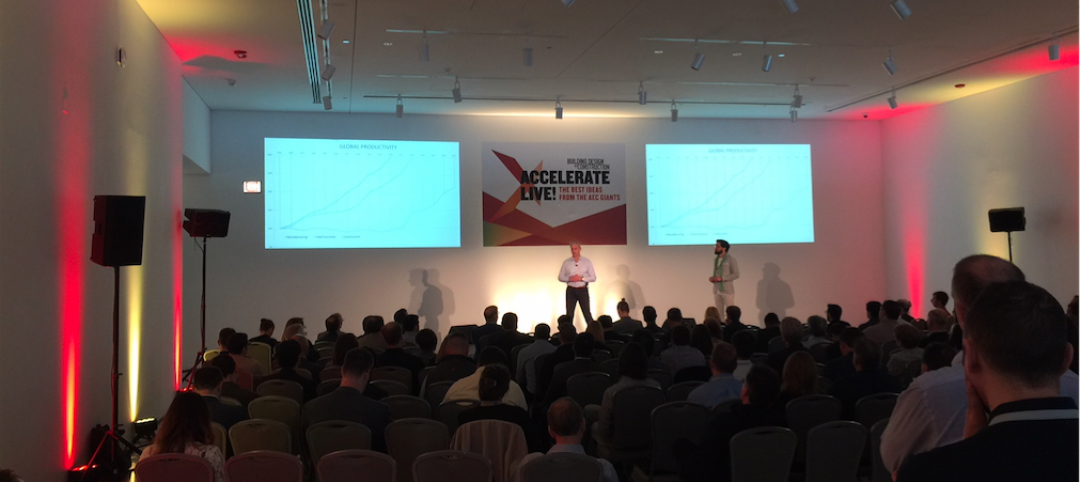A 166,000-sf barracks with 300 bedrooms for 600 military personnel is under construction at the Great Lakes Naval Base in Illinois with the help of robots that can lay bricks every seven to 10 seconds and can lift and place foundation blocks weighing up to 135 lbs.
This $52 million project, started last March and scheduled for completion in October 2020, represents the debut of semi-robotic construction for the general contractor Clark Construction Group. Construction Robotics, a Victor, N.Y.-based manufacturer that launched in 2007, is providing the machines, which are called MULE (for Material Unit Lift Enhancer) and SAM (for Semiautomated Mason). Blinderman Constuction is Clark's partner on this project.
This is also the first construction project in the country to use MULE and SAM technology in tandem.
There are currently more than 130 MULEs operating in the field, and 11 SAMs, with more under production, says Scott Peters, president and cofounder of Construction Robotics. His company has worked with more than 80 contractors, from large GCs like Barton Malow and Wilhelm Construction, to local masonry subcontractors like Leidal & Hart Mason Contractors in Michigan and Jimmy ‘Z Masonry in Crystal Lake, Ill., the latter of which is working on the abovementioned barracks project, and reportedly advocated for the use of robots.
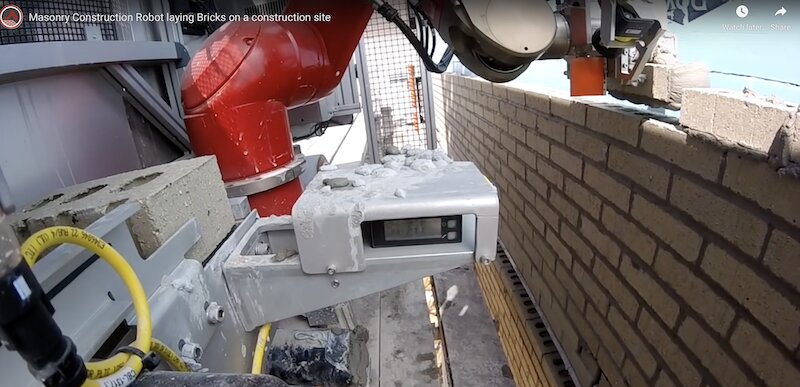
The SAM robot can lay brick at a pace of one every 7-10 seconds.
Construction Robotics’ machines have installed more than one million sf of wall, says Peters, whose training is in engineering. His partner, Nate Podkaminer, has a background in architecture and construction.
Tyler Shawcross, Clark’s senior project manager, says that his company first met with Construction Robotics’ principals about five years ago. “Our R&D team is always looking for ways to build smarter,” he says.
When asked how this technology benefits masons at a time when workers are losing their jobs to automation in many industries, Shawcross notes that masonry, like many other construction trades, is suffering from labor shortages and an aging workforce. Plus, he adds, these trades simply are not attracting younger workers.
Construction Robotics has had a training program for masons in place since 2018. Both Peters and Shawcross agree that the technology not only has the potential for extending the work longevity of masons, but also might entice younger workers to consider entering the profession.
MULEs cost between $70,000 to $80,000 to purchase and are relatively simple to operate. For the barracks project, the MULE grabs the 32-inch blocks (which Oldcastle developed specifically for this job). The mason positions the hoisted block onto the foundation row. “It’s like an extension of your hand,” says Shawcross.
SAMs are more complicated machines that require three-to-five days of training to operate. The machines are generally leased by the week, month, or longer. Peters is reluctant to discuss pricing because, he explains, each project is different and requires customized software coding. (Peters notes that SAMs can be programmed to lay bricks in complex patterns and color sequences.)
To view videos of MULE and SAM in action, click here.
Construction Robotics claims SAMs reduce labor costs by at least 30%. Shawcross couldn’t quantify the time and cost savings from using the robots. He notes, though, that the machines provide a reliable production rate. “We see it as an opportunity to drive cost certainty into a project. I don’t think it’s a large cost reducer, but it could be a scheduling reducer.”
Peters says that robotics are most effective in construction when they are factored into the building process early in the planning stage. “That’s why we engage with GCs like Clark.” He concedes, however, that the construction industry in general is slow to change. “Companies need to think about new technology, and use their money to learn.”
Shawcross believes that robotics will become more prevalent on jobsites for performing repetitive tasks. Peters says that on another project, a MULE was used to move concrete form panels into place. “It’s one of those rare products that provides both speed and safety,” he says.
Related Stories
AEC Tech | Mar 26, 2019
Embracing collaboration tools from outside the AEC industry
Let's take a look at the available technologies from outside AEC that are seeing greater adoption within the industry.
AEC Tech | Mar 24, 2019
5 ways designers and builders can use business intelligence with data they already have
Tricky construction budgets, large project teams, and unique designs needing extensive coordination are all problems increasingly being handled with new software tools and data.
AEC Tech | Feb 8, 2019
BI(m): BIM data without models
A new breed of data tools creates a valuable opportunity for the next wave of BIM and facilities management, one where “pure data” is at the center, writes John Tobin of SMRT Architects.
AEC Tech | Jan 9, 2019
Our robotic future: Assessing AI's impact on the AEC profession and the built environment
This is the first in a series by Lance Hosey, FAIA, on how automation is disrupting design and construction.
3D Printing | Dec 7, 2018
Additive manufacturing heads to the jobsite
Prototype mobile 3D printing shop aims to identify additive manufacturing applications for construction jobsites.
AEC Tech | Sep 27, 2018
BD+C editors want your input on AEC technology
Please help us improve our editorial coverage by taking this brief survey.
Sponsored | AEC Tech | Sep 14, 2018
Sponsored webinar: Benefits of traceable construction
In this free 60-minute webinar, Keith Alcorn of FARO Technologies will talk about the concept of traceable construction and how 3D reality capture solutions provide portable, efficient, secure, and forward-looking solutions for data collection, pre-processing, and evaluation in the design, build and operating phase. September 18, 2:00 EST.
AEC Tech | Jul 24, 2018
Weidt Group’s Net Energy Optimizer now available as software as a service
The proprietary energy analysis tool is open for use by the public.
Accelerate Live! | Jul 17, 2018
Call for speakers: Accelerate AEC! innovation conference, May 2019
This high-energy forum will deliver 20 game-changing business and technology innovations from the Giants of the AEC market.
Accelerate Live! | Jun 24, 2018
Watch all 19 Accelerate Live! talks on demand
BD+C’s second annual Accelerate Live! AEC innovation conference (May 10, 2018, Chicago) featured talks on AI for construction scheduling, regenerative design, the micro-buildings movement, post-occupancy evaluation, predictive visual data analytics, digital fabrication, and more. Take in all 19 talks on demand.



